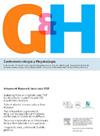Body mass index does not influence loss of response to tumor necrosis factor inhibitors in Crohn's disease
IF 1.9
4区 医学
Q3 GASTROENTEROLOGY & HEPATOLOGY
引用次数: 0
Abstract
Objectives
Moderate to severe Crohn's disease (CD) treatment was revolutionized by introducing anti-tumor necrosis factor (TNF) agents, which is still a cornerstone of the treatment. It is speculated that adipose tissue may influence treatment response, especially for non-weight-adjusted agents.
Patients and methods
Research comparing the effectiveness of anti-TNFs between eutrophic and overweight patients may impact clinical management. We performed a retrospective analysis of a CD patient database. The primary endpoint was loss of response (LOR) after 54 weeks with infliximab (IFX) and adalimumab (ADA) in patients with body mass index (BMI) <25 and ≥25. Secondary endpoints were steroid-free remission and endoscopic remission rate.
Results
One hundred seventy-nine CD patients were evaluated; 48.9% had LOR after 54 weeks of anti-TNF therapy. Fifty-four patients had a BMI ≥25, with 51 receiving IFX and 28 receiving ADA. The univariate analysis identified LOR in 56.5% of the patients with IFX and 34.9% in the ADA group (p = 0.009). In the 54-week multivariate analysis, loss of response in the IFX group with BMI ≥25 had a relative risk of 1.04 [CI 0.60–1.80 (p = 0.891)] compared to patients with BMI <25. Being overweight or obese led to a risk of 1.50 for LOR for ADA at 54-week time point [CI 0.60–3.74 (p = 0.0387)]. Clinical remission at 54 weeks was similar between BMI groups.
Conclusions
Being overweight did not influence the LOR to treatment when IFX and ADA were compared, nor did it affect clinical and endoscopic remission after 54 weeks.
体重指数不影响克罗恩病患者对肿瘤坏死因子抑制剂的反应丧失。
目的:引入抗肿瘤坏死因子(TNF)药物彻底改变了中度至重度克罗恩病(CD)的治疗,这仍然是治疗的基石。据推测,脂肪组织可能会影响治疗反应,特别是对于非体重调节药物。患者和方法:研究比较富营养化和超重患者抗肿瘤生长因子的有效性可能会影响临床管理。我们对一个CD患者数据库进行了回顾性分析。主要终点是体重指数(BMI) < 25和≥25的患者在使用英夫利昔单抗(IFX)和阿达木单抗(ADA) 54周后的反应丧失(LOR)。次要终点为无类固醇缓解和内窥镜缓解率。结果:对179例CD患者进行评估;48.9%的患者在抗tnf治疗54周后发生LOR。54例患者BMI≥25,51例接受IFX治疗,28例接受ADA治疗。单因素分析发现,IFX患者中有56.5%存在LOR, ADA组中有34.9% (p=0.009)。在54周的多变量分析中,与BMI < 25的患者相比,BMI≥25的IFX组患者的相对风险为1.04 [CI 0,60-1.80 (p=0.891)]。超重或肥胖导致54周时ADA发生LOR的风险为1.50 [CI 0,60-3,74 (p=0.0387)]。54周时,BMI组间的临床缓解相似。结论:当比较IFX和ADA时,超重不影响治疗的LOR,也不影响54周后的临床和内镜缓解。
本文章由计算机程序翻译,如有差异,请以英文原文为准。
求助全文
约1分钟内获得全文
求助全文
来源期刊

Gastroenterologia y hepatologia
GASTROENTEROLOGY & HEPATOLOGY-
CiteScore
1.50
自引率
10.50%
发文量
147
审稿时长
48 days
期刊介绍:
Gastroenterology and Hepatology is the first journal to cover the latest advances in pathology of the gastrointestinal tract, liver, pancreas, and bile ducts, making it an indispensable tool for gastroenterologists, hepatologists, internists and general practitioners.
 求助内容:
求助内容: 应助结果提醒方式:
应助结果提醒方式:


